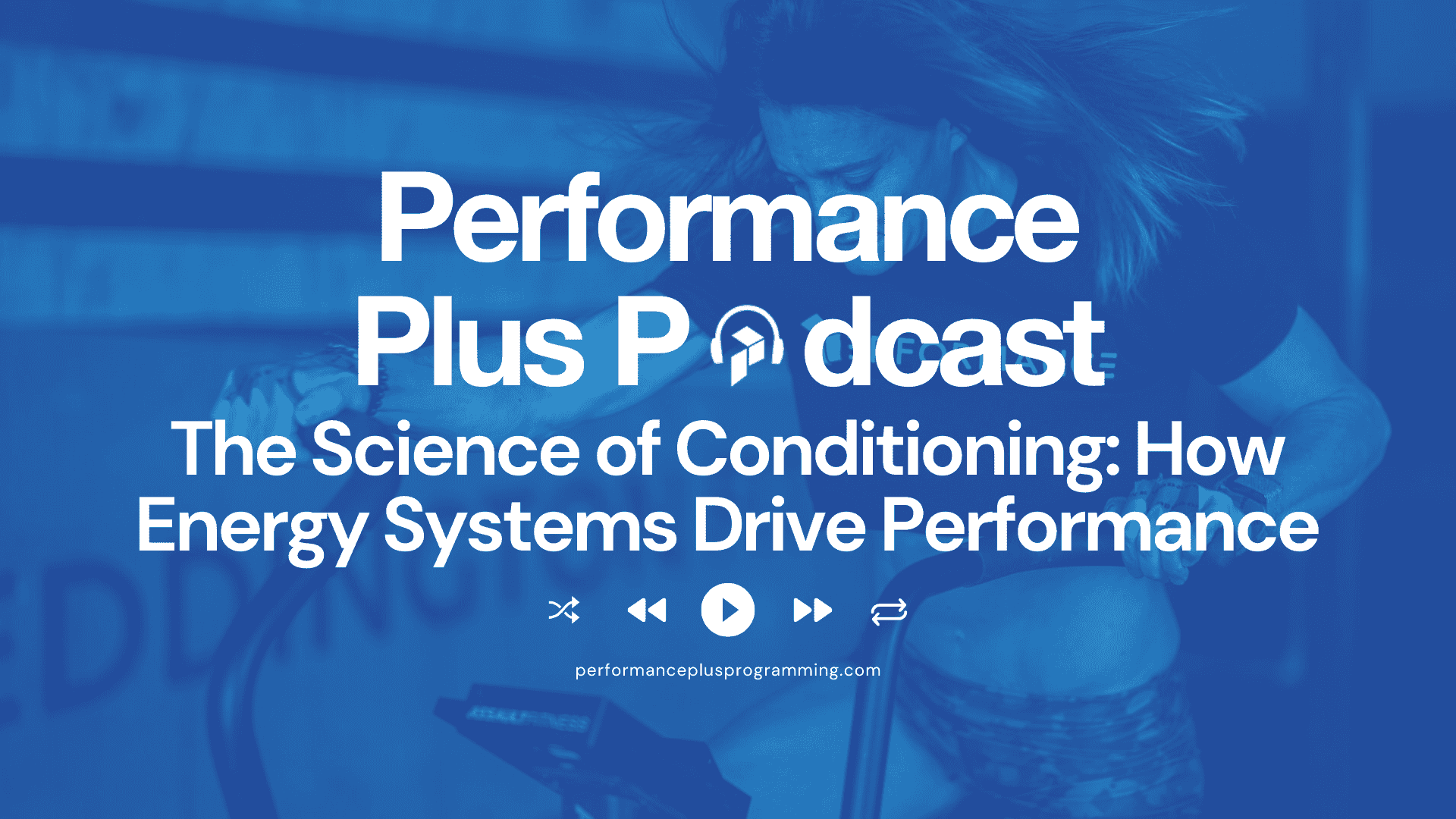
How Energy Systems Drive Performance – Build Your Engine Episode 2

How Energy Systems Drive Performance – Build Your Engine Episode 2
In this episode, Zachary Long and Johnny discuss the intricacies of energy systems in fitness, particularly in the context of CrossFit and functional fitness. They explore the three main energy systems—phosphagen, glycolytic, and oxidative—how they function, and their importance in training. The conversation delves into the concept of lactate threshold, its role in performance, and strategies for effectively training these energy systems to enhance overall fitness and conditioning.
Download the Build Your Engine eBook here!
Need proven programs to unleash your engine? Check out our Build Your Engine programs!
Episodes
- Rethinking Conditioning
- How Energy Systems Drive Performance
- Accessory Conditioning WODs You Need to Train (releasing 12/23)
- Wrist vs. Chest Heart Rate Monitors (releasing 12/23)
Takeaways
- You can’t just rely on one type of training for conditioning.
- Understanding energy systems is crucial for effective programming.
- The lactate threshold is a key metric for performance.
- Training should target specific energy systems intentionally.
- Improving lactate threshold enhances overall fitness capacity.
- Aerobic training supports recovery in high-intensity workouts.
- Intensity and recovery are critical in energy system training.
- Using power output can be more effective than heart rate zones.
- CrossFit athletes need to balance intensity with recovery.
- A solid understanding of energy systems aids in better programming.
Chapters
- 00:00 Introduction to Energy Systems in Fitness
- 02:46 Understanding the Three Main Energy Systems
- 06:09 The Role of Lactate Threshold in Performance
- 12:06 Training Strategies for Energy Systems
- 20:51 Conclusion and Future Programming Insights
Podcast Summary
To optimize conditioning, athletes need to understand how the body generates energy during workouts. This episode breaks down the three energy systems—phosphagen, glycolytic, and oxidative—and explains how each contributes to peak performance in high-intensity metcons. We provide a clear framework for athletes to target each system more effectively, helping them achieve better results in the gym.
In the latest episode of the *Performance Plus Podcast*, Zach Long and Johnny B dive deep into the energy systems that drive conditioning for CrossFit and functional fitness athletes. They break down the complex physiology of energy production and how to train it for optimal performance.
The Three Main Energy Systems
Energy systems refer to the chemical processes that generate energy for exercise, each corresponding to different workout intensities and durations. Here’s a simplified overview of the three primary energy systems, which are crucial for CrossFit athletes:
Phosphagen System (ATP-PC)
- Duration: 0-10 seconds
- Intensity: Maximum effort
- This system is responsible for very short bursts of energy, like an all-out sprint or heavy lift. It rapidly produces energy but depletes quickly, making it critical for movements like a 3-rep max lift or a 10-second assault bike sprint.
Glycolytic (Lactic Acid) System
- Duration: 10-75 seconds
- Intensity: High-intensity effort
- This system kicks in for efforts lasting up to a minute, such as a max-effort 400-meter sprint or a CrossFit-style interval workout. The body uses stored glycogen to produce energy, but as intensity increases, so does lactate production.
Oxidative System
- Duration: 75+ seconds
- Intensity: Moderate to low intensity
- This is the primary system for longer efforts like sustained rowing or running. It supports workouts lasting several minutes to hours, relying heavily on oxygen to fuel aerobic exercise. Building a strong oxidative system is key to improving endurance.
How These Energy Systems Work in CrossFit
Unlike single-modality sports, CrossFit often demands simultaneous engagement of all three energy systems due to its mix of lifting, gymnastics, and cardio. In a single workout, athletes may switch between energy systems depending on the exercise, rep range, and intensity.
For example:
- During the early part of a high-rep workout like 150 wall balls, the phosphagen system might dominate for unbroken sets, but fatigue sets in, shifting reliance to the glycolytic system.
- As the workout progresses, the oxidative system takes over to maintain a slower, steady pace.
The Role of Lactate Threshold in Conditioning
The lactate threshold is a crucial factor in energy system development. It represents the point where lactate production exceeds the body’s ability to clear it, leading to rapid fatigue. Pushing this threshold higher allows athletes to sustain higher intensities for longer, a key to improving CrossFit performance.
Johnny explains the “bucket analogy” for energy production:
- Aerobic capacity: Think of this as the size of the bucket.
- Lactate buffering: This represents how quickly water can flow out of the bucket.
- By increasing both, athletes can handle higher workloads before fatigue forces them to slow down.
How to Train Each Energy System
To enhance conditioning, athletes should focus on training each energy system specifically:
Phosphagen System
- Workouts: Short sprints, max-effort lifts, or explosive intervals lasting under 10 seconds.
- Recovery: Longer rest periods are needed to fully recover between efforts.
Glycolytic System
- Workouts: 30-60 second intervals with moderate rest, targeting high-intensity efforts that build lactate tolerance.
- Recovery: 2-3 minutes between efforts to allow partial lactate clearance.
Oxidative System
- Workouts: Zone 2 steady-state cardio, sustained rowing, or long runs at a lower heart rate.
- Recovery: Active recovery days or low-intensity sessions that still develop aerobic capacity without high muscular demand.
Why Knowing Your Training Intensity Matters
Johnny and Zach emphasize the importance of training with specific intensity markers, such as:
- Heart rate zones: Ensure you’re hitting the right energy system in each workout.
- Power output: Programs like Performance Plus use wattage goals to ensure athletes train at optimal intensities.
Recovery and Energy Systems
Training different energy systems also impacts recovery. For example:
- Zone 2 workouts allow for better recovery while still boosting aerobic fitness.
- Overtraining in the glycolytic system, however, can result in fatigue and inadequate recovery, negatively affecting performance.
Final Thoughts: Building Your Conditioning Engine
Understanding and training each energy system is critical for CrossFit athletes aiming to build a complete engine. Effective conditioning programming should include a balance of all three systems, focusing on improving both aerobic capacity and lactate threshold.
If you want a detailed guide, Zach has provided a downloadable PDF, outlining the energy systems and how to program workouts for each. In future episodes, Zach and Johnny will break down specific workouts and progression strategies for developing conditioning in functional fitness athletes. Stay tuned!





